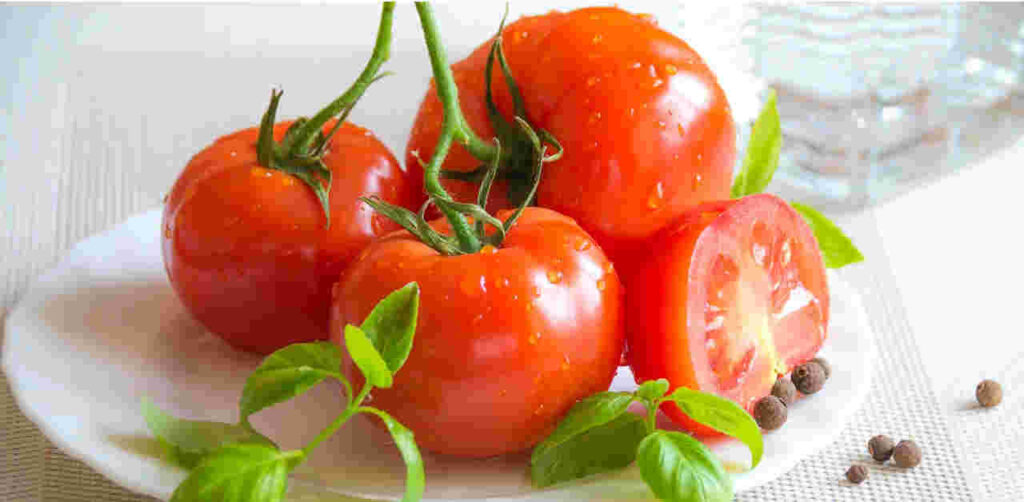Published by: Almanac
There’s nothing quite like the taste of homegrown tomatoes. But they aren’t a plant that you can just leave to grow. Some knowledge and care is required in order to avoid common pitfalls. We’ll run through 10 tips and tricks for trouble-free tomatoes.
1. Choose the Right Variety
It may seem obvious, but the varieties you grow need to be suited to your climate. Choose cool-climate varieties for regions with shorter growing seasons and hot-climate varieties for very warm regions in order to ensure they can still produce fruit in summer.
2. Provide Heat and Full Sun!
Tomatoes are heat lovers. Be careful not to plant tomatoes in the ground too soon. Your soil temperature must be consistently over 60 to 65 degrees Fahrenheit (15 to 18°C). Warm the soil with black plastic a couple of weeks prior and protect seedlings from the cold with sheets or row covers.
3. Provide The Right Growing Conditions
Add plenty of organic matter in advance of planting. Quality garden compost or well-rotted manure applied lavishly, can supply enough nutrients to last the entire season, and will help with retaining moisture—a lifesaver during the heat of summer! Two weeks before planting your tomato plants outdoors, beef up that soil! Dig into the soil about 1 foot deep and mix in aged manure or compost.
4. Plant Deeply and Provide Support
Most plants need to be planted at the same depth they were growing at as a seedling or young plant. But not tomatoes! When you plant tomatoes, plant a little deeper than they come in the pot, all the way up to the bottom few leaves! Tomatoes root along their stems, so this trick helps them develop stronger roots.
5. Mulch Your Tomatoes
Don’t forget to add a blanket of mulch! It helps to conserve moisture (tomatoes love their water!) and keeps soil-borne disease spores from being splashed up onto the plants. There are many good mulches to choose from—shredded pine bark, straw, shredded leaves, grass clippings, composted leaves, or even a thick layer of newspaper. Oddly enough, red plastic has been found to increase the fruiting of tomatoes by 12 to 20%.
6. Remove Leaves and Suckers
“To pinch or not to pinch?” is a debated question. All tomatoes have suckers or side shoots that form between the main stalk and the side branches during the early growth of their plants (the crotch joint).
You definitely do not want to pinch determinate (bush) varieties, or you will have only a few fruit clusters. Since determinates bear fruit only on the ends of their branches, never clip them off, or you won’t get any fruit at all!
However, most gardeners do pinch indeterminate tomatoes (the type that keeps growing). You can pinch out the side shoots or suckers when they are young and tender. The best time is first thing in the morning when the plant is turgid. Just snap them off with your fingers.
7. Water Consistently?
Watering is one area where getting it right counts! Juicy tomato plants need 1 to 2 inches of water per week. But not all at once. Aim for consistent moisture as plants are establishing, and then, once they begin to set fruit, let the soil or potting mix just about dry out between waterings. It’s okay for the foliage to show early signs of wilting before watering, but don’t push it too far.
8. Feed, Feed, Feed
The tastiest tomatoes are gleaned from plants that have access to all the nutrients they need.
Besides prepping the soil with organic matter (compost), most gardeners also apply a slow-release organic fertilizer to the soil at planting time or apply regular liquid feeds using a product specifically formulated for tomatoes (which often has extra calcium).
9. Defend Against Disease?
Blossom-end rot is a common complaint typically caused by a lack of calcium in the fruit. Often, though, the simple cause of blossom-end rot is irregular watering, which makes it harder for the plants to absorb all the nutrients they need. To boost the calcium content of your soil, consider using eggshells, which are full of calcium.
Blight is a far more serious threat. This disease can lay waste on an entire crop within days. Good airflow will help reduce problems, as well as water at the base of plants to avoid wetting the leaves. Many gardeners even remove the lowest leaves specifically to improve airflow and minimize splashback when watering. Laying a mulch of clean, dry organic matter such as straw can also reduce splashback.
10. Harvest for Maximum Flavor
Harvesting tomatoes is an art in itself. You can harvest once the tomato is red and gives slightly to the touch. Don’t wait until it’s soft! Or you can actually harvest earlier when the tomato is half green and half pinkish-red (called the breaker stage) and ripen off the vine with no loss of flavor, quality, or nutrition.
